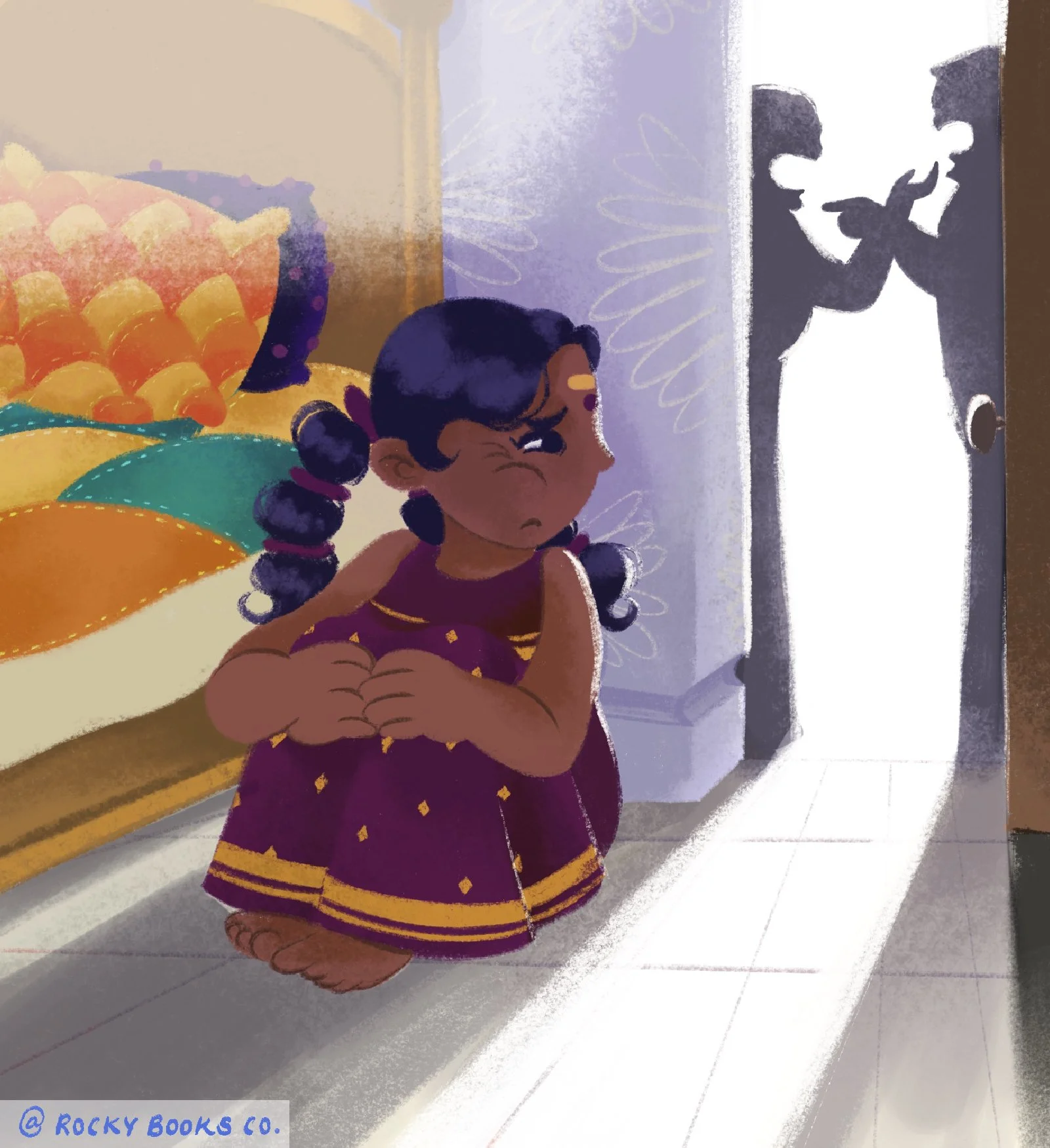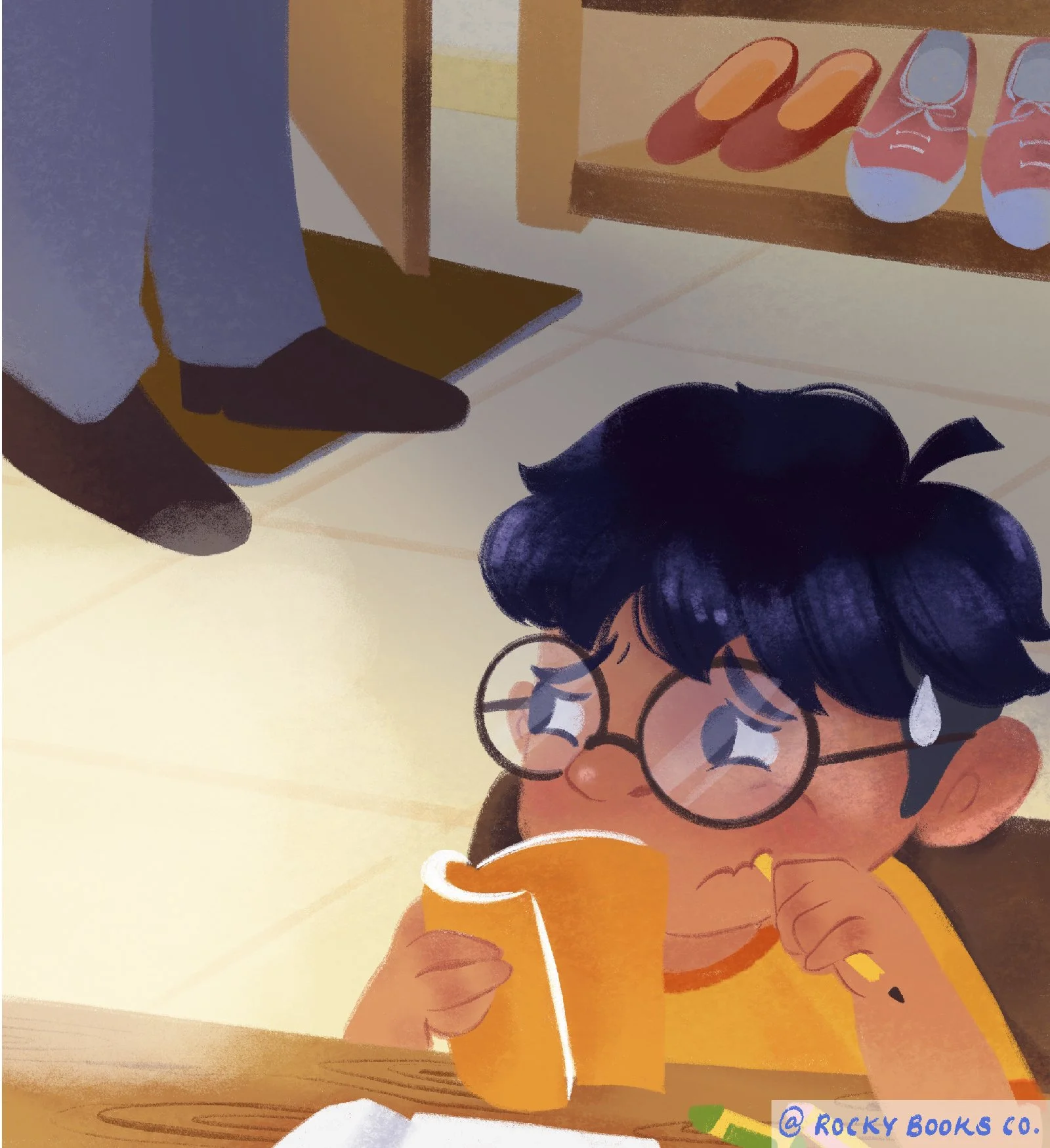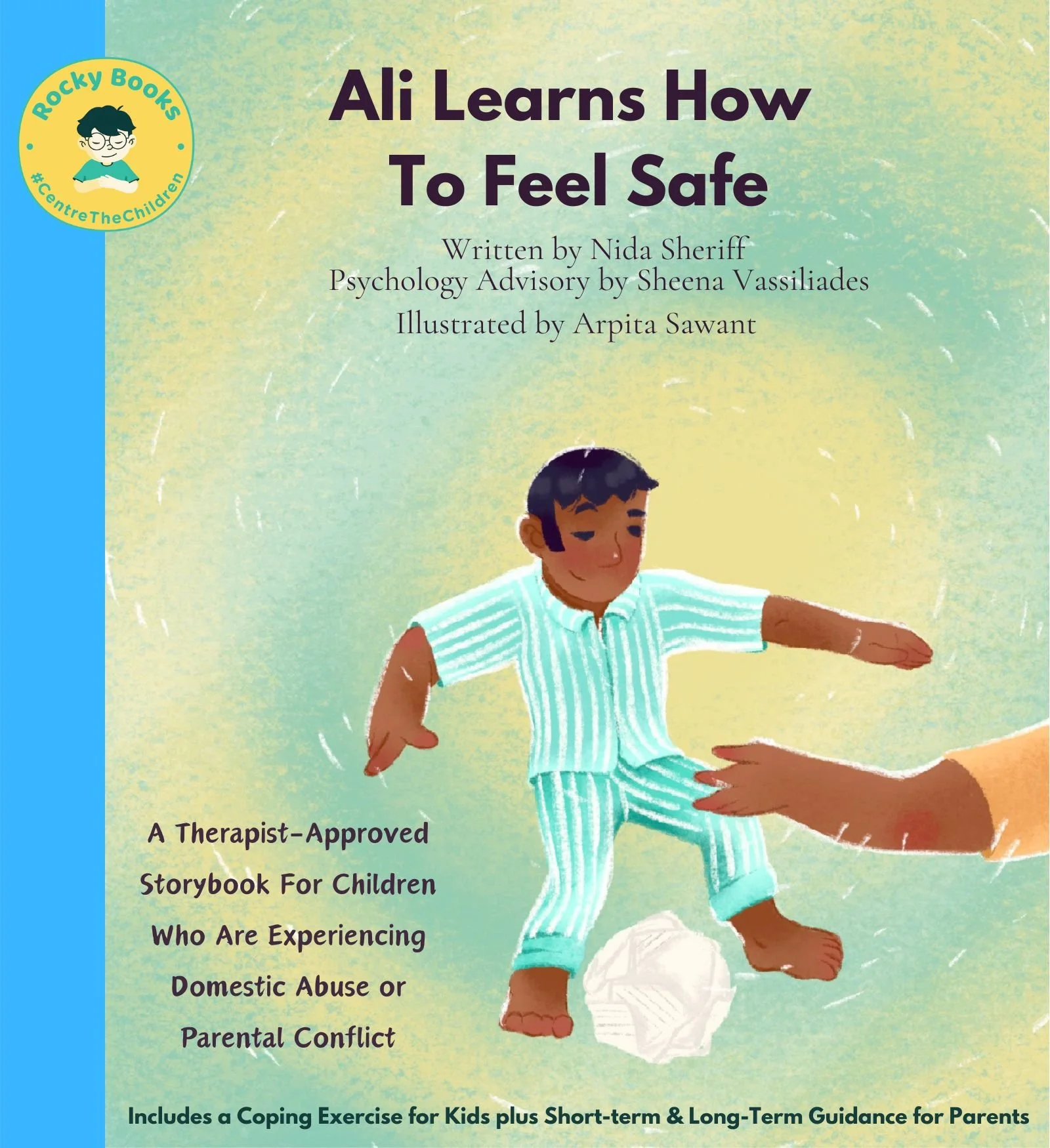Anxiety in Children
What is anxiety?
Anxiety is an intense and persistent feeling of fear or dread. People who experience anxiety may feel uneasy, restless and tense. They may have persistent worried thoughts. Physical symptoms of anxiety include sweating, a rapid heart rate, quickened breathing, elevated blood pressure, and tiredness.
Anxiety is your body’s natural reaction to stress or fear. It is completely normal to feel anxious about things like taking an important test or a job interview. However, anxiety disorders can become a concern if your anxiety begins to interfere with your everyday life as anxious thoughts become frequent, excessive and all-consuming.
What is childhood anxiety disorder?
Children can have anxiety just like adults can. Normal anxiety about everyday things like taking a test or starting at a new school can last for a few hours or a few days and usually goes away once the issue has been resolved. However, if a child has continuous anxious thoughts and feelings for more than 6 months this could be considered an anxiety disorder.
The Anxiety and Depression Association of America states that one in eight children are affected by childhood anxiety disorders.
What causes anxiety in children?
Anxiety in children can be triggered by a specific life event or experience, especially if it is a stressful one. For others, it could be a genetic predisposition to anxiety, or it may be learned behaviour from a parent or family member who is frequently anxious or worries a lot.
Some causes of anxiety in children are:
Parental conflict: Parents or family members who argue or fight frequently.
Parents who are going through a divorce or separation.
The death of a loved one.
Major life changes, like moving to a new city or country, a new house, or starting at a new school.
A traumatic experience like a car accident, house fire, being displaced due to war or natural disaster.
Food insecurity.
Housing insecurity.
Bullying.
Domestic abuse or parental neglect.
Frequent life changes can cause feelings of instability.

What are the types of anxiety in children?
Children can be affected by a specific type of anxiety. Identifying the type of anxiety may help get your child the right kind of treatment.
1. Separation anxiety
Separation anxiety usually affects very small children as they may be scared when their parents aren’t with them, or they may be afraid of strangers or new places. As a child gets older and starts school separation anxiety usually gets better. However, it may be a cause for concern if separation anxiety seems to be getting worse, or if the child is scared of going to school, going to sleep alone, or does not want to be away from home and their family.
2. Phobias or specific fears
A phobia is an extreme, irrational fear of something specific. Common phobias in children include fear of clowns, animals, the dark, a loved one getting hurt, flying or heights.
3. Social anxiety
Social anxiety is an extreme fear of social interactions. Children with social anxiety may have an irrational fear that everyone is watching or judging them, or that they might be embarrassed in front of their peers. Children with social anxiety are often very self-conscious about saying or doing the wrong thing and can have difficulty making friends.
4. Generalised anxiety disorder
Generalised anxiety disorder in children may look like excessive and intense worry about day-to-day activities. Children with generalised anxiety disorder or GAD may seem to worry a lot about the future, finances, their family and their health. Children with GAD may seem to feel overwhelmed with worry and their anxiety may affect their ability to live normally.
5. Panic disorder
Signs of a panic disorder in children include frequent and sudden panic attacks, intense feelings of fear, palpitations, shortness of breath, shaking, sweating and numbness. Children with a panic disorder may feel a sense of impending doom or fear of losing control.
How does anxiety affect children?
If left untreated childhood anxiety disorders can have detrimental long-term effects on children well into adulthood. Anxiety is a normal part of life and a natural response to fear. However, it may be a cause for concern if anxiety is affecting a child's daily life or preventing them from doing the things that they love or enjoy.
Children who experience anxiety may:
Be at an increased risk for depression.
Be at an increased risk for developing substance addiction.
Struggle with school and academics.
Be at a higher risk for suicide.
Have lower self-esteem and confidence.
Avoid doing new things or taking up new opportunities in their career.
What are signs that a child has anxiety?
We know it can be difficult to know if your child has anxiety or to figure out the cause of their anxiety. Children often exhibit symptoms that are both behavioural and physical when feeling anxious. These symptoms may appear over weeks, months or even years. If your child has shown symptoms of an anxiety disorder for longer than six months, it may be time to seek professional guidance from your healthcare provider.
Here are some signs of anxiety in children to look out for:
Constant worried thoughts or feelings.
Difficulty falling asleep or sleeping.
Having nightmares.
Difficulty relaxing or having fun.
Frequently angry or snapping at others.
Difficulty focusing on tasks or schoolwork.
Not feeling well, constant headaches, stomach aches or tiredness.
Loss of appetite or eating too much/binge eating.
Using the bathroom more frequently than normal.
Refusing to go to school.
Avoiding or being afraid of going out in public.
Avoid meeting friends or going out to play.
Shaking or shivering.
Crying a lot.
Wetting the bed.
Lack of confidence in everyday tasks.
Overwhelmed by thoughts of bad things happening.

How can we support children who have
experienced anxiety?
Anxiety can feel overwhelming, especially for children who may not fully understand what they are experiencing. As adults, it’s easy to dismiss their worries as small or unimportant but recognizing the intensity of their feelings is the first step in helping them manage anxiety.
To support a child experiencing anxiety:
Acknowledge their feelings:
Validate their emotions, regardless of how they express them: through play, storytelling etc. Let them know that it’s okay to feel anxious. Reassure them that their feelings (or the feelings of the characters they may be talking through) are real and important.
Name and explain:
Help them understand what anxiety is and that it’s a natural stress response. Naming the emotion can make it less frightening. Don’t blame: Avoid making them feel guilty or ashamed for their anxious feelings. Instead, create a supportive and non-judgmental environment.
Normalize the experience:
Share your own experiences with anxiety to show them they are not alone, and that everyone feels anxious from time to time. Mirror their feelings: Reflect their emotions by acknowledging what they’re going through. For example, “It seems like you’re feeling really worried about the test today.”
Collaborate on small changes:
Work together to find manageable ways to ease their anxiety, like creating a calming routine or focusing on breathing exercises. Small steps toward change can lead to big results.
Set times to talk:
Have regular check-ins to give them space to express their feelings. Knowing they have set times to talk can reduce anxiety about the unknown.
Tailored outlets:
Help them find healthy ways to express and manage their anxiety. This could be through art, sports, journaling, drawing or any activities that bring them comfort.
Supporting a child through anxiety requires patience and empathy. By validating their feelings and working together to find solutions, you can help them build resilience and feel more in control of their emotions.
How our books for anxiety help children
We know it can be difficult to know when a child has anxiety. Children don’t have the tools or language to be able to communicate their feelings, especially about complex or scary emotions like anxiety.
Our children’s books for anxiety:
Illustrate the symptoms of anxiety in children, such as stomach ache, rapid heartbeat and hypervigilance through our relatable children's characters.
Help kids identify and describe feelings of anxiety.
Include easy-to-follow fully illustrated grounding exercises. These exercises help kids cope with panic attacks and intense feelings of fear or worry that come with anxiety.
Put anxiety into context that kids and parents might relate to. This could help parents identify why their child has anxiety. For example, parental conflict may cause anxiety in children.
Show how anxiety can affect children. For example, Rocky Books characters who have anxiety are shown to have difficulty focusing on school work or have constant worrying thoughts.
Our Children’s Books About Anxiety
How Rahul Keeps Calm When He Feels Anxious
Rahul feels scared and anxious when his daddy shouts. Join Rahul as he learns how to keep himself calm with the help of a grounding exercise.
Tanu Learns How To Overcome Her Fears
Tanu feels worried and can’t focus on her homework when her mummy and daddy argue at home. Join Tanu as she learns a coping exercise to overcome her feelings of fear and anxiety.
When Ali’s mummy gets angry and shouts he feels very worried and sad. With the help of a fun football-related coping exercise Ali learns how to focus on positive feelings instead of negative ones.
Ali Learns How To Ask For Help
When Ali fights with his friend on the playground his teachers are concerned. Join Ali as he learns how to ask trusted adults for help for problems at home.
Ginny Bravely Identifies and Tackles Gaslighting
When Ginny experiences being gaslighted at home by her mum, she bravely learns how to identify gaslighting and cope with the complicated emotions it can cause.
Sara and her Family Overcome Challenges After the Earthquake
Sara faces the loss of her home and school, and feelings of anxiety and fear after an earthquake in her city. Sara learns to overcome these challenges with her parents and friends.
Our blogs about anxiety:
-
I feel compelled to share Sara's tragic story especially since we are constantly working on resources for the most vulnerable section of society.
-
We make storybooks for children experiencing trauma. But you cannot read a storybook to a dead child.
-
We have made our Trauma Support Booklets available for FREE download in Arabic & Turkish languages. Please share with your networks!

Sources
Zhen Wang et al., “Introduction,” Anxiety in Children - NCBI Bookshelf, August 1, 2017, https://www.ncbi.nlm.nih.gov/books/NBK476265/.
“Anxiety in Children,” Cleveland Clinic, May 1, 2024, https://my.clevelandclinic.org/health/diseases/anxiety-in-children.









